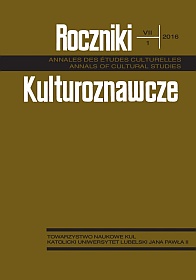The Use of Quantitative Analysis of Digitised Newspapers to Challenge Established Historical Narratives
Abstract
This article illustrates the benefits of employing quantitative analysis of digitised primary sources in historical research, demonstrating how it can challenge old orthodoxies and create new insights. The author has used a database of scanned copies of British fascist newspapers from the 1930s to create a large, consistent and representative sample of fascist discourse during this period. Employing a coding methodology, the author has recorded all mentions of Jews within that sample, enabling him to trace over time the evolution of the fascists’ antisemitism, in terms of its quantity, typology and prominence within their discourse. This approach—in combination with more traditional analysis of sources—challenges various longestablished and widely accepted aspects of the relevant historiography. In particular, the author demonstrates that the consensus among historians regarding the chronological evolution of British fascist antisemitism is false, and instead he presents a new, fivestage model of its development. This more accurate timeline allows the author to offer a clearer explanation of the motives and ideology that underlay the fascists’ attitude towards Jews.
References
Alderman, Geoffrey. Modern British Jewry. Oxford: Oxford University Press, 1998.
Anderson, Margo. “Quantitative History.” In The Stage Handbook of Social Science Methodology, edited by William Outhwaite and Stephen Turner. London: Sage Publications, 2007.
Antisemitism in the Modern World, edited by Richard Levy. Massachusetts: Heath and Co., 1991.
Arendt, Hannah. The Origins of Totalitarianism. London: Andre Deutsch, 1986.
Baldoli, Claudia “Anglo-Italian Fascist Solidarity?: The Shift from Italophobia to Naziphilia in the BUF.” In The Culture of Fascism: Visions of the Far Right in Britain, edited by Thomas Linehan and Julie Gottlieb. London: IB Tauris, 2004.
Bauer, Yehuda. “In Search of a Definition of Antisemitism.” In Approaches to Antisemitism: Context and Curriculum, edited by Michael Brown. New York: The American Jewish Committee, 1994.
Brustein, William I. Roots of Hate: Antisemitism in Europe Before the Holocaust. Cambridge: Cambridge University Press, 2003.
Brewer, John D. Mosley’s Men: The British Union of Fascists in the West Midlands. London: Gower, 1984.
Budge, Ian, Hans-Dieter Klingemann, Andrea Volkens, Judith Bara, and Eric Tanenbaum. Mapping Policy Preferences: Estimates for Parties, Electors, and Governments 1945-1998. Oxford: Oxford University Press, 2001.
Cross, Colin. The Fascists in Britain. London: Barrie and Rockliff, 1961.
Cullen, Stephen M. “Political Violence: The Case of the British Union of Fascists.” Journal of Comtemporary History 28 (1993), 2: 245–67.
Doob, Leonard W. “Ezra Pound Speaking”: Radio Speeches of World War II. Westport: Greenwood, 1978.
Dorril, Stephen. Blackshirt: Sir Oswald Mosley and British Fascism. London: Penguin, 2007.
Ettinger, Samuel. “Jew-Hatred in Historical Context.” In Antisemitism Through the Ages, edited by Shmuel Almog. Oxford: Pergamon Press, 1988.
Evans, Michael, Wayne McIntosh, Jimmy Lin, and Cynthia Cates. “Recounting the Courts? Applying Automated Content Analysis to Enhance Empirical Legal Research.” Journal of Empirical Legal Studies 4 (2007): 1007-39.
Gentzkow, Matthew, and Jesse M. Shapiro. “What Drives Media Slant? Evidence from US Daily Newspapers.” Econometrica 78 (2010): 35-71.
Harap, Louis. Creative Awakening: The Jewish Presence in Twentieth-Century American Literature, 1900s-1940s. Westport: Greenwood, 1987.
Holmes, Colin. Anti-Semitism in British Society 1876-1939. London: Arnold, 1979.
Lewis, David Stephen. Illusions of Grandeur: Mosley, Fascism and British Society, 1931-81. Manchester: Manchester University Press, 1987.
Langmuir, Gavin. Toward a Definition of Antisemitism. Berkeley: University of California Press, 1990
Linehan, Thomas. East London for Mosley: The British Union of Fascists in East London and South-West Essex. London: Frank Cass, 1996.
Linehan, Thomas. British fascism 1918-39: Parties, ideology and culture. Manchester: Manchester University Press, 2000.
Mandle, W.F. Anti-Semitism and the British Union of Fascists. London: Longman, 1968.
Paxton, Robert. The Anatomy of Fascism. London: Penguin, 2004.
Pennings, Paul. “An Empirical Analysis of the Europeanisation of National Party Manifestos, 1960-2003”. European Union Politics 7 (2006): 257-70.
Pugh, Martin. “Hurrah for the Blackshirts”: Fascists and Fascism in Britain Between the Wars. London: Pimlico, 2005.
Skidelsky, Robert. Oswald Mosley. London: Papermac, 1990.
Thurlow, Richard. Fascism in Britain: From Oswald Mosley’s Blackshirts to the National Front. London: IB Tauris, 2006.
Tilles, Daniel. “The Myth of Cable Street”. History Today 61 (2011).
Tilles, Daniel. British Fascist Antisemitism and Jewish Responses, 1932-40. London: Bloomsbury, 2014.
Volkens, Andrea. Manifesto Data Set. MDS 2005 Data Handbook. Berlin: WZB, 2005.
Webber, G.C. “Patterns of Membership and Support for the BUF.” Journal of Contemporary History 19 (1984): 575-606.





